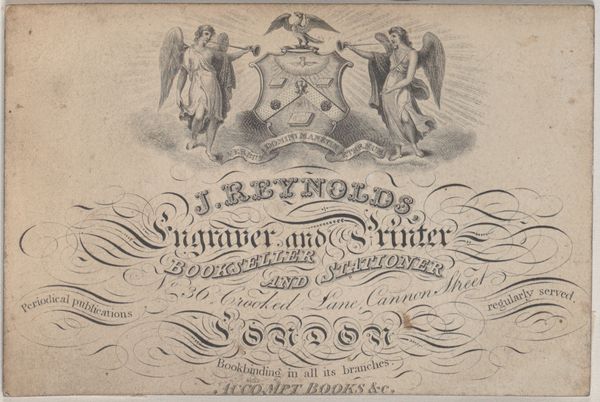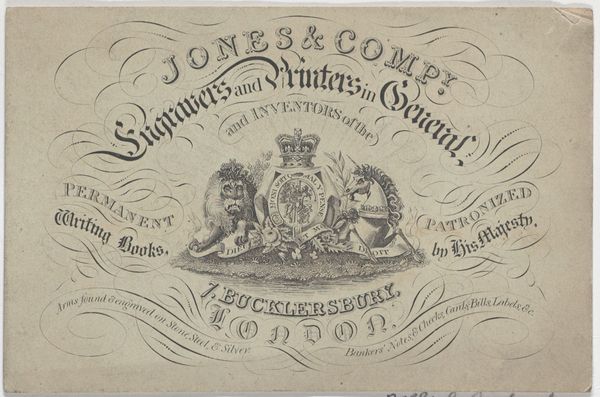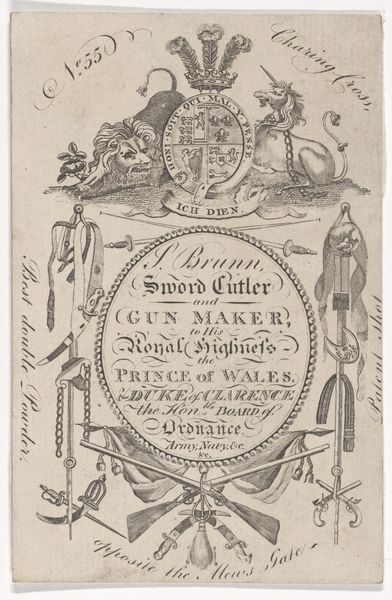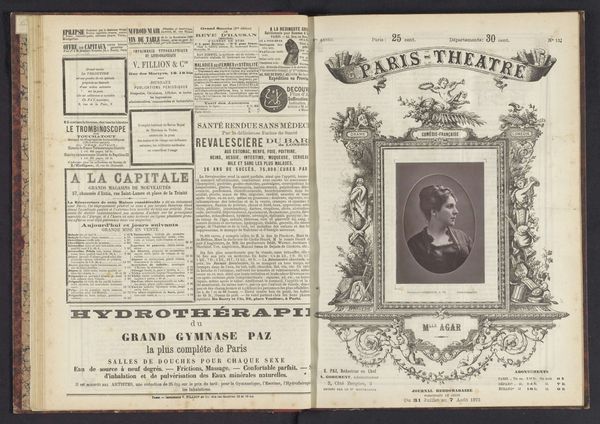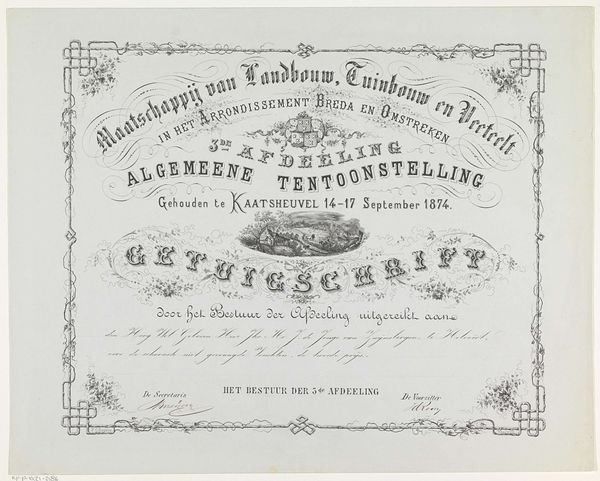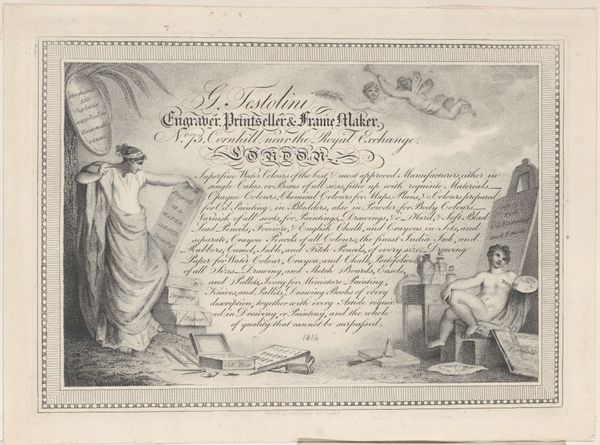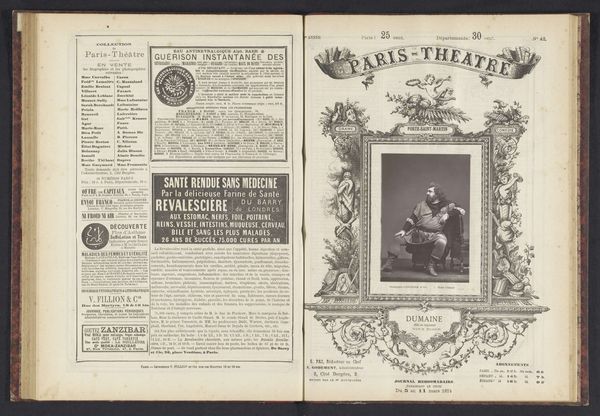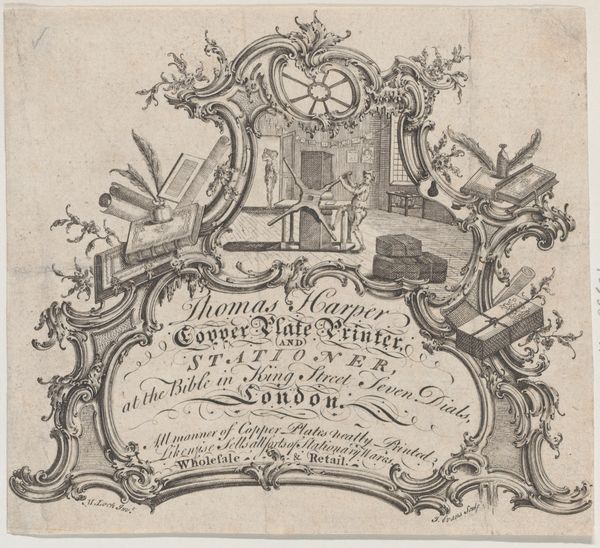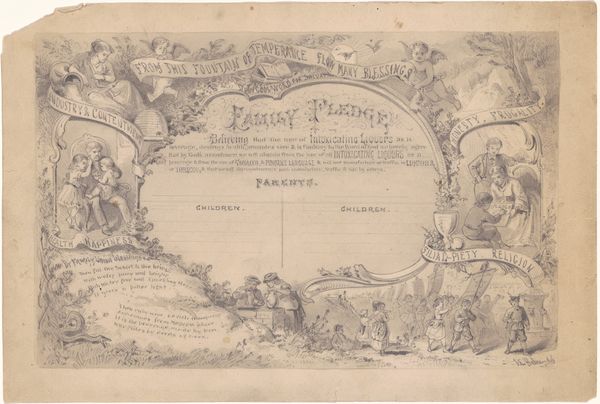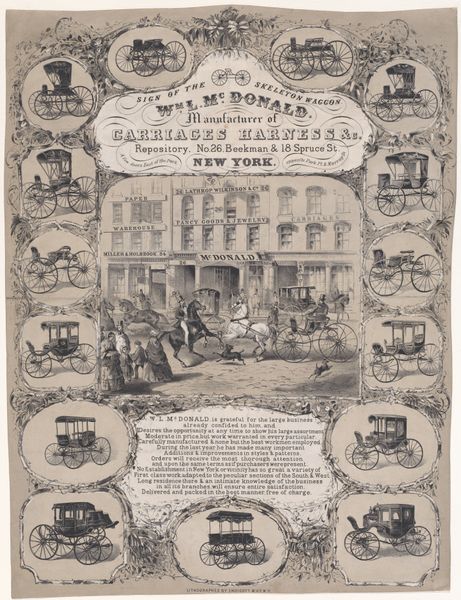
Trade Card for W. Baker, Engraver, Lithographer & Stationer 1800 - 1900
0:00
0:00
drawing, graphic-art, print, engraving
#
drawing
#
graphic-art
# print
#
engraving
Dimensions: Sheet: 2 15/16 × 4 5/16 in. (7.5 × 10.9 cm)
Copyright: Public Domain
Editor: Here we have a trade card for W. Baker, an engraver, lithographer and stationer, dating from somewhere between 1800 and 1900. It's a detailed engraving, and its complexity really grabs you. What jumps out at you when you look at this piece? Curator: I'm immediately drawn to the way it embodies the burgeoning commercial culture of its time. Notice how Baker isn't just selling a service; he's selling status, touting patronage by "Sir T. Mitchell & Cap O'Connell." How does that make you think about issues of class and access to information and services? Editor: It makes it seem exclusive, definitely not for everyone. Almost aspirational. Curator: Exactly. And what about the imagery itself? You have a woman with an artist's palette, almost an allegory for the arts. And then you have these Masonic symbols, coupled with the promise of a "General Registry Office". What do you make of those juxtapositions? Do they suggest any specific claims to power, control or membership? Editor: I hadn't really considered the Masonic symbolism before, but you're right. It adds a layer of coded messaging. It's almost like they're speaking to several audiences at once. Curator: Precisely. And think about the context. Sydney, the location on the trade card, would have been growing quickly and would have presented several socio-political challenges for different populations. The card is so interesting as a product of a very specific moment of colonial ambition. How does it fit into that picture, selling not only Baker's skills but also a particular vision of order and progress? Editor: So, this isn't just about advertising; it's about communicating cultural values. That's such a clever observation and one I had missed completely! Curator: That is why intersectional analyses are essential, to explore multiple influences in art and decode the meanings it conveys!
Comments
No comments
Be the first to comment and join the conversation on the ultimate creative platform.
